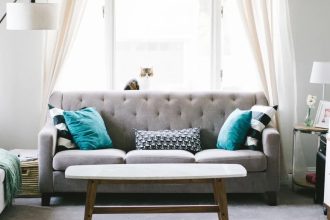For many of us, our homes are a place of comfort, security, and belonging. But for people with disabilities, home can often be a barrier to independence and full participation in daily life. Home accessibility refers to the design and modification of homes to make them safe and comfortable for people with disabilities. This includes features such as wheelchair ramps, grab bars, wider doorways, and accessible bathrooms. Home accessibility is not only important for individuals with disabilities, but also for their families, caregivers, and the wider community. In this blog post, we will explore why home accessibility is crucial for people with disabilities and how it can improve their quality of life.
Increased Independence for Those With Mobility Impairments
One of the most significant benefits of home accessibility for people with disabilities is increased independence, especially for those with mobility impairments. Individuals with mobility impairments can move around their homes more freely and safely with the right modifications.
For example, wheelchair ramps can make it easier for individuals to enter and exit their homes independently, while grab bars in bathrooms and hallways can provide stability and support. Wider doorways and lower countertops can also make it easier for individuals to perform daily tasks such as cooking and cleaning.
You can modify your home to be as accessible as possible and create a safe, enjoyable living environment for those with mobility impairments. Also, as highlighted by the team behind Stiltz Healthcare, you can ask for funding or grants from organizations to help with the cost of home adaptation and increase independence for those living with disabilities. Home accessibility can help people with disabilities lead more fulfilling and autonomous lives.
Improved Quality of Life
By creating a safer, more comfortable, and more accessible living environment, individuals with disabilities can experience a greater sense of security and well-being in their own homes. They can perform daily tasks more easily and with greater dignity and participate more fully in family and community life.
This can positively impact mental health and emotional well-being, leading to greater happiness and a better quality of life overall. By recognizing and addressing the unique needs of people with disabilities, home accessibility can help ensure that everyone can live a fulfilling and meaningful life.
Improved Safety
Home accessibility modifications can also improve safety for people with disabilities. A home not designed or modified for accessibility can be hazardous, especially for those with mobility or visual impairments. For example, narrow hallways and doorways can be difficult to navigate in a wheelchair, and uneven surfaces can cause tripping hazards.
However, modifications such as handrails, wheelchair ramps, and non-slip flooring can help to reduce the risk of falls and other accidents. This not only helps to protect the health and well-being of people with disabilities but can also provide peace of mind for their families and caregivers.
Enhanced Comfort and Convenience
Home accessibility modifications can also enhance comfort and convenience for people with disabilities. For example, accessible bathrooms with roll-in showers and adjustable shower heads can make personal hygiene tasks more comfortable and convenient for individuals with mobility impairments. Wider doorways and hallways can also improve the flow of natural light and ventilation, making the home more comfortable and reducing the need for artificial lighting and cooling.
In addition, accessible kitchens with lower countertops and cabinets can make cooking and meal preparation easier and more enjoyable. By enhancing comfort and convenience, home accessibility modifications can improve the overall quality of life for people with disabilities.
Reduced Need for Personal Assistance
With the right modifications, individuals can perform daily tasks more easily and independently, reducing their reliance on personal caregivers or family members. For example, accessible bathrooms with grab bars and walk-in tubs can allow individuals to bathe and groom themselves without assistance, while stair lifts can enable individuals to move freely between floors without help.
This not only promotes greater independence but also helps to reduce the cost of personal assistance and the burden on family members or caregivers. By making the home more accessible, individuals with disabilities can maintain greater autonomy and control over their daily lives.

Access to Recreational and Socialization Venues
When the home is accessible, individuals can more easily leave their homes to participate in community events, visit friends and family, or access recreational venues such as parks, museums, and theaters.
In addition, home accessibility modifications can make it easier for individuals to entertain guests at home, fostering socialization and a sense of community. By improving access to recreational and socialization venues, home accessibility can help to reduce social isolation and promote greater participation in community life, enhancing the overall quality of life for people with disabilities.
Home accessibility is crucial for people with disabilities, providing increased independence, improved safety, enhanced comfort and convenience, reduced need for personal assistance, and access to recreational and socialization venues. By making homes more accessible, we can help to ensure that people with disabilities have the opportunity to live fulfilling and meaningful lives. It is essential to recognize and address the unique needs of people with disabilities and to promote accessible and inclusive housing design to improve the overall quality of life for all.













